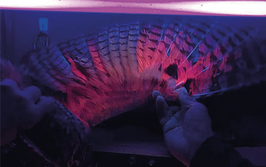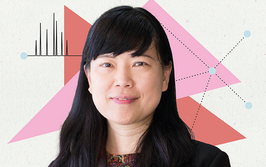Two Words: Food Scanners
H2020 wanted to put food authentication into the hands of the consumer. What impact will the outcome have on our field?
Two years ago (in June 2014) and by mere coincidence, I entered the field of vibrational spectroscopy. I was starting my first ‘real’ job as a young researcher at RIKILT in Wageningen. My business unit deals with food authenticity and fraud, multivariate statistics, analytical techniques and many different food types. We looked at what we were doing in the lab and reassigned the tasks, and then I found myself leading the near-infrared, mid-infrared, and Raman spectroscopy division. At that point, I hadn’t fully appreciated the revolution going on in the field, which was elaborated upon by Heinz Siesler (University of Duisburg-Essen, Germany) in the July 2015 issue of The Analytical Scientist (1).
To get to the point, it is clear that miniaturized equipment is being developed at a rapid pace for professional usage in all subdivisions of vibrational spectroscopy. This miniaturization, in combination with a considerable database and some advanced chemometrics (such as machine learning), has resulted in powerful easy-to-use tools for food prescreening. At the NIR 2015 conference in Brazil last October, oral and poster sessions were replete with new applications using miniaturized NIRS instruments. And we presented our first work on non-destructive, through-package authentication of chicken meat. Although our meat authentication was quite an out-of-the box idea, responses were positive. And it seems that vibrational spectroscopy is being driven into new areas that we may never have considered even a few years ago.
But what about consumer applications for food authentication? Back in July 2015, the European Commission offered a €1 million award in its H2020 research and innovation program for a “food scanner” that “analyses precisely, quickly and efficiently food composition, nutrition facts, and potentially harmful ingredients such as allergens” (2). The winner will certainly need an even more out-of-the-box approach than those I saw at NIR 2015. But if it is possible to develop a universal food scanner, it will almost certainly lead to a revolution in food traceability and fighting food fraud. Wouldn’t it be convenient for food researchers to get spectral data linked to GPS coordinates? The competition is now closed, but judging will run until autumn 2016.
Surprisingly, one of the key H2020 food scanner challenges was solved early on: cheap hardware. Almost as soon as the H2020 challenge was issued, a startup company made my day by sending me a $250 NIR spectrometer. Linked to a smartphone using Bluetooth and equipped with a simple cloud interface, it offers an almost Apple-like experience. Although it will take a while to test and validate this new hardware properly, you can see that it represents an exciting new era in hardware and big data. Funnily enough, when visiting the Recent Advances in Food Analysis conference in Prague back in November 2015, surprisingly few posters or talks were dedicated to portable food scanners. Perhaps in our field, the technology has not yet advanced sufficiently for proper scientific presentation – or those working on such solutions were simply holding cards close to chests and holding out for a big win! In either case, I’m very much looking forward to the outcome of the H2020 competition; and I’d be surprised if the term ‘food scanner’ doesn’t become familiar language in the near future...
- H Siesler, “Spectroscopy Brought Down to Size”, The Analytical Scientist, 0715 (2015). theanalyticalscientist.com/issues/0715/spectroscopy-brought-down-to-size/
- ec.europa.eu/research/horizonprize/index.cfm.
Yannick Weesepoel is Researcher, Food Authenticity – Food Scanners, RIKILT, Wageningen University & Research, the Netherlands.

















